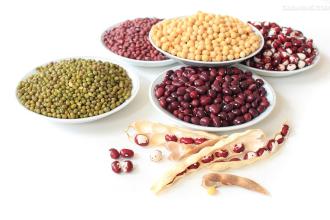Colombia Na Linglong Coffee Grind Scale Variety Taste Manor Treatment Features Introduction
Colombia coffee has a silky texture. People equate Colombia coffee with high quality, good taste. It is sour with sweet, low bitter, rich in nutrients, with a unique sour and alcohol taste, Colombia premium coffee acid, bitter, sweet taste of the three just right. Unique fragrance, after drinking, the fragrance fills the whole mouth. The aroma of the mouth and then exhale from the nose, the smell is very rich. Perhaps you will think it is too overbearing, because it will occupy people's taste buds, thoughts and even souls at the fastest speed. In people's lives, it is full of sour, sweet, bitter, astringent, the aroma of coffee is enough to take away everything in the mortal world. What people enjoy is not just a cup of coffee, but also the quiet moment coffee brings to people. Colombia Premium is characterized by its aroma, rich and thick, with a clear quality of acidity, high balance, it is memorable.
Colombia coffee grower's personification is the hallmark of Colombia coffee, distinguishing it from coffee from other countries of origin and being accepted in different markets. Over the last 40 years, Colombia coffee growers have worked hard to create the JUAN VALDEZ brand we see today. In 2005, The New York Times recognized the brand's importance in the United States, as its trademark recognition has surpassed many of the world's leading brands and has gradually become a world famous brand. Colombia coffee varieties are mainly small coffee. Plants are small trees or large shrubs, 5-8 meters high, usually multi-branched at the base; old branches are gray, nodes expand, young branches glabrous, compressed. Leaves thinly leathery, ovate-lanceolate or lanceolate, 6-14 cm long, 3.5-5 cm wide, apex long acuminate, acuminate 10-15 mm long, base cuneate or slightly obtuse, rarely rounded, entire or shallowly undulate, glabrous on both surfaces, with or without pits in axils of lower veins; midvein raised on both surfaces of leaf blade, lateral veins 7-13 on each side; petiole 8-15 mm long; Stipules broadly triangular, born at the top of the young branches conical long pointed or awned tip, born at the top of the old branches are often pointed, long 3-6 mm. Cymes several clustered in leaf axils, each inflorescence 2-5 flowers, without pedicels or with very short pedicels; flowers fragrant. Pure taste of Colombia coffee, from Colombia, which has the most favorable conditions for coffee growth. But beyond that, it is inseparable from the hard work of local growers. In Colombia, coffee is cultivated on 1.07 million hectares, there are about 302,000 coffee plantations in the country, and 30 to 40 per cent of the rural population depends directly on coffee production. Although Colombia has many farms, they are not large. Each farm has an area of only about 2 hectares, and more than 80% of coffee plantations have only about 5000 coffee trees, with an average of 3000. Thus, agriculture in Colombia is of the small farm type. Locals plant tall trees or banana trees around coffee trees. A pergola for coffee trees at seedling stage

Important Notice :
前街咖啡 FrontStreet Coffee has moved to new addredd:
FrontStreet Coffee Address: 315,Donghua East Road,GuangZhou
Tel:020 38364473
- Prev

Lively fragrance description of Guatemala Antigua Coffee Flavor introduction of Grinding scale varieties
Antigua is the oldest and most beautiful city in America. As early as 1543, Antigua was the capital of all colonial times in Central America, and the Government House of Spain was also set up here. The whole city of Antigua was destroyed after the great earthquake of 1773, so the capital was moved to Guatemala City. Antigua is about 40 kilometers west of Guatemala City, where colonial buildings are located.
- Next

El Pacamara Coffee Flavor Description Grind Scale Treatment Variety Introduction
El Salvador is tied with Mexico and Guatemala as the producer of Asa and Meldo, and is competing with other countries for the top one or two places in Central America. Highland origin, for the size of large coffee beans, fragrant taste mild. As in Guatemala and Costa Rica, coffee in El Salvador is graded according to altitude, with the higher the altitude, the better the coffee.
Related
- Detailed explanation of Jadeite planting Land in Panamanian Jadeite Manor introduction to the grading system of Jadeite competitive bidding, Red bid, Green bid and Rose Summer
- Story of Coffee planting in Brenka region of Costa Rica Stonehenge Manor anaerobic heavy honey treatment of flavor mouth
- What's on the barrel of Blue Mountain Coffee beans?
- Can American coffee also pull flowers? How to use hot American style to pull out a good-looking pattern?
- Can you make a cold extract with coffee beans? What is the right proportion for cold-extracted coffee formula?
- Indonesian PWN Gold Mandrine Coffee Origin Features Flavor How to Chong? Mandolin coffee is American.
- A brief introduction to the flavor characteristics of Brazilian yellow bourbon coffee beans
- What is the effect of different water quality on the flavor of cold-extracted coffee? What kind of water is best for brewing coffee?
- Why do you think of Rose Summer whenever you mention Panamanian coffee?
- Introduction to the characteristics of authentic blue mountain coffee bean producing areas? What is the CIB Coffee Authority in Jamaica?

